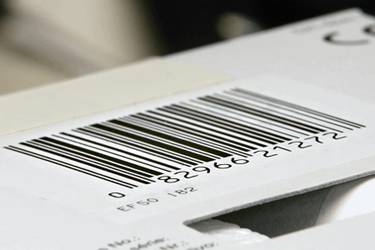State Of Serialization: Where FDA & The Pharma Industry Currently Stand
By Jerry Martin

Serialization in the pharmaceutical sector is a direct response to the problems of counterfeit, stolen, and gray-market drugs. There's been a huge incentive for counterfeiters to duplicate high-profit-margin products. According to the 2016 Brand Protection and Product Traceability Market Research Report from PMMI, the black market for counterfeit drugs is about $75 billion annually. A bigger issue for consumers, however, is that falsely labeled medicines can have a direct impact on life and health. And for pharmaceutical manufacturers, the reputation of their brand and even company name can be severely tarnished. When we think of counterfeiting, typically we just think about falsely labeling drugs, but there is also a big problem with theft of drugs and hijacking — both breaking into warehouses and the hijacking of trucks. According to the World Health Organization (WHO), these factors are costing the global pharmaceutical industry about $40 billion a year.
To combat theses various issues, the FDA announced the Drug Supply Chain Security Act (DSCSA) in 2013. Essentially, the DSCSA requires the industry to institute electronic, interoperable systems that enable them to identify and trace prescription drugs distributed into the United States. To properly implement and be effective, this requires a series of activities, involving not just pharmaceutical manufacturers but also distributors, shipping companies, and the entire supply chain. This is not a one-time event, but an ongoing process that will be established over the next 10 years.
Initially, the critical point was November 27 of this year, as the DSCSA required pharmaceutical manufacturers to begin marking their salable units and homogeneous cases of prescription drugs with a serial identification code or product identifier by that date. Now, this is deadline has been extended one year, as several recent studies revealed that a significant percentage of the pharma industry is still not ready for the requirements, especially virtual and small to midsize companies.
Simply put, the industry didn't properly anticipate how difficult this was going to be and what was involved with it. Many of the smaller companies were concerned about the cost of implementation, but more than that, there has been a lack of knowledge on how to create an effective serialization program. The preparation is very complicated. As a hypothetical example, a company may have thought, "Oh, I have to change something on my label." But, if you're not set up to read the label and you don't have the computer systems to be able to follow through on tracking, just adding more information on the labels is not enough to meet compliance. It's more than just integrating new technology on a packaging line, because many aspects of the company need to be involved, as well as suppliers and distribution.
Fortunately, the FDA now has recognized that there are a limited number of vendors available to offer solutions and a lack of readiness by the contract manufacturers. In June, they issued a draft guidance pushing back the enforcement deadline for the product identifiers until next November. This may generate some confusion, however, as the compliance deadline remains November 27, 2017, but the FDA delayed enforcement of product identifiers until November 27, 2018. They've just given people a year's grace period before they're going to hold their hands to the fire. They'll probably include questions about a company’s serialization progress during inspections, just to ensure the company is working on it.
The FDA has also recognized a lack of understanding of the purpose and the long-term benefits of DSCSA from an economic point of view regarding supply chain efficiency. Many companies believe they are doing it for no other reason than the government requirement, with one recent survey from SEA Vision and Zenith Technologies revealing a little more than half were doing it just for compliance purposes. The same report also said a little less than half of the respondents recognized there could be broader business benefits from being able to track and trace where your products are going, especially as it relates to gray-market and counterfeit sales.
Since the FDA has relieved some of that pressure by giving manufacturers until November 2018 before serialization will become obligatory, companies need to examine the scope of the work and evaluate the best solutions. Another way companies are getting ahead of the issue is by building inventory in order to buy themselves a buffer. With additional product in the marketplace manufactured before the November 2018 date, this fills their distribution chain so they're not actually manufacturing lots that will require this serialization until a later date.
As for other pieces of the supply chain, the deadline for wholesale distributors remains 2019, and the deadline for dispensers — compounding laboratories and pharmacies — is 2020. By 2023 it will be applied to authorized trading partners, effectively making it global. Long before that, however, companies that don't comply by the end of 2018 will find it impossible to market their drugs in the United States.
So regardless of any temporary fixes, the deadline is still coming, and pharmaceutical companies have to start implementing a serialization system and ensuring serialization data gets transferred to their contract manufacturers, packaging partners, and supply chain. The minimum immediate requirement is for them to add an identification number, serial number, lot number, and the expiration date onto labels in both a 2D data matrix bar code and human-readable form. That creates some challenges regarding real estate on the label, especially the 2D bar code, and that's where it starts to get complicated. You have to have the equipment to put that information on and then figure out where and how you're going to apply it. It ends up taking a year and a half to two years to do all of this.
Fortunately, there is a global standard for establishing the identification number. While this is helpful, there are not yet global standards for the other numbers, so that creates some complexity for companies that are manufacturing for multiple countries.
In my next column, I will discuss the best ways companies can approach compliance and use it to better their business.
About The Author:
 Jerry Martin is an independent consultant to pharmaceutical manufacturers and equipment suppliers for filtration, single-use manufacturing, marketing, business development, and regulatory compliance. He was previously SVP, marketing and global scientific affairs, for Pall Life Sciences, where he served the pharmaceutical, biotech, medical device, and vaccine industries for over 37 years. He is currently chairman emeritus of the Bio-Process Systems Alliance, the single-use manufacturing trade association, and a member of the USP Expert Panel on Plastic Systems Used for Manufacturing Pharmaceutical Products. He holds an M.Sc. in microbiology from the University of Toronto.
Jerry Martin is an independent consultant to pharmaceutical manufacturers and equipment suppliers for filtration, single-use manufacturing, marketing, business development, and regulatory compliance. He was previously SVP, marketing and global scientific affairs, for Pall Life Sciences, where he served the pharmaceutical, biotech, medical device, and vaccine industries for over 37 years. He is currently chairman emeritus of the Bio-Process Systems Alliance, the single-use manufacturing trade association, and a member of the USP Expert Panel on Plastic Systems Used for Manufacturing Pharmaceutical Products. He holds an M.Sc. in microbiology from the University of Toronto.
This year’s Healthcare Packaging Expo, co-located with PACK EXPO Las Vegas (September 25 to 27 at the Las Vegas Convention Center) will provide attendees the opportunity to see the latest innovations in serialization and meet with suppliers well-versed in compliance. The show will also feature educational sessions on regulatory matters and other industry insights about the healthcare, pharmaceutical, and biopharmaceutical businesses. The event is produced by PMMI, The Association for Packaging and Processing Technologies. Together, both shows will feature more than 2,000 exhibitors and draw 30,000 attendees. For more information, visit packexpolasvegas.com or hcpelasvegas.com.
